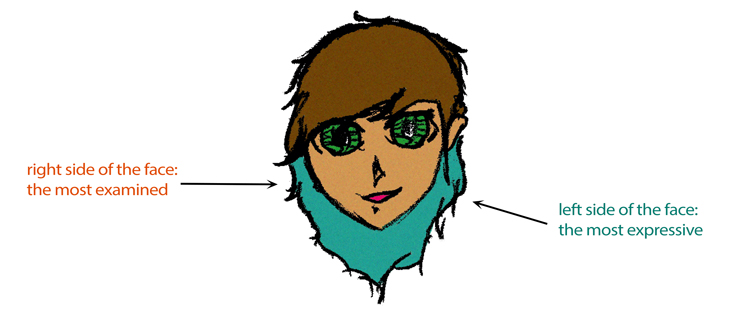Emotional facial Lateralisation
In my protagonists’ chimeras I discovered over and over again aspects of their personality which I hadn’t identified during our first meeting; particularly in their left chimeras.
Experiments confirm that the left side of the face shows more emotion than the right side, and that emotions, a smile for example, linger longer on the left side than on the right side.
Due to the fact that people experience emotional patterns repeatedly, and they use the same muscles each time when expressing these emotional patterns, the face physiognomy changes after a while.
The right side of the face, which I name “public”, is affected by the “logical” left brain: Our ego and the social imprint surface.
The left side of the face, which I call “private”, is controlled by the
“emotional-intuitive” right brain. Left chimeras, in particular, show
the current state of the experienced and lived world of feelings. In them we can see love, kindness, sympathy, agony, trauma and
much more.
Double Asymmetry
Interestingly, a double asymmetry remains – an asymmetry in the perception and an asymmetry in the emotional facial expression.
The right side of the face receives the most attention, while the left side of the face – most strongly imprinted with emotions – does not.
The woman in us sees the man in others, our emotional, feminine world stays private. In the mirror, however, we first see our “private” identity, while in a photo the “public side” catches our attention faster. As a result, this leads to a distorted self-image.
In my personal experience I have observed that the mood changes when you target the left side of your counterpart’s face. Often the person appears unsure or self-conscious, and then looks suddenly at the floor or becomes quieter and more cordial or warmer.
Further informations are available in the book,
and also on the exhibition page "Asymmetrophobie".
